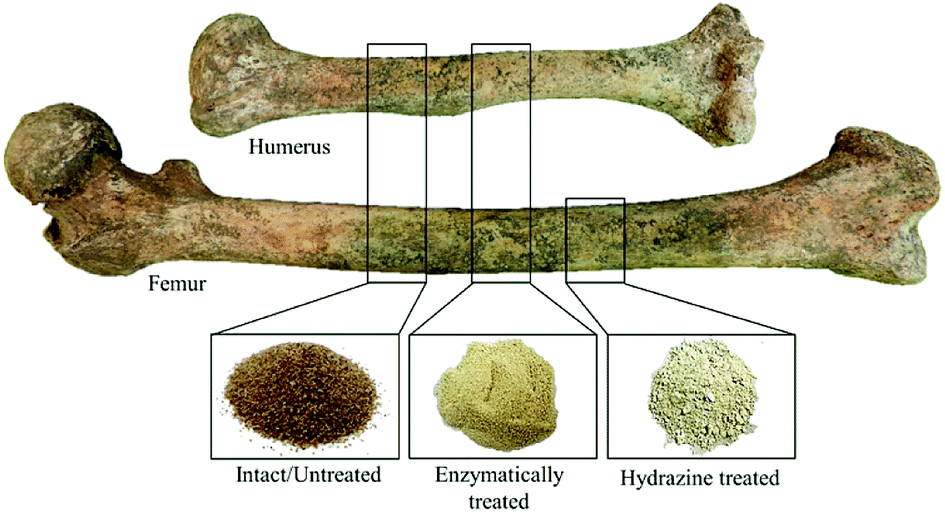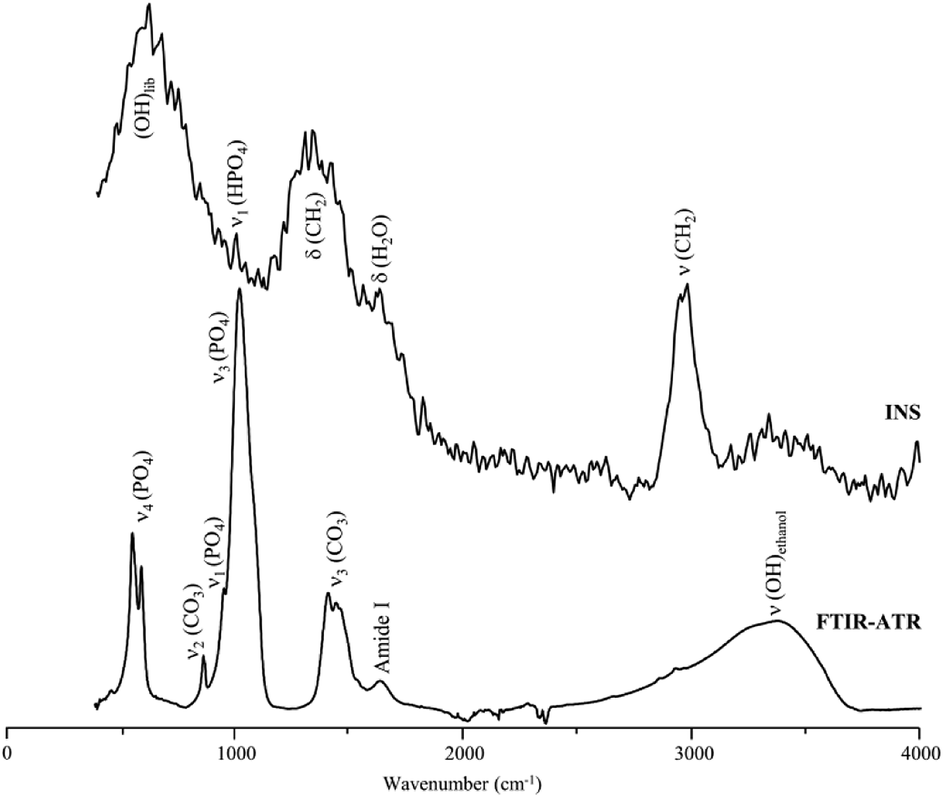The team from the “Molecular Physical-Chemistry" R&D Group of the University of Coimbra, Portugal have been using vibration spectroscopy with neutrons in MAPS and TOSCA as innovative analysis looking towards developing biomaterials.
Orthopaedic xenografts – bone grafts from other animal species – are incredibly useful in healing fractures and bone defects arising from chronic disease or trauma, as well as being used as inducers of bone regeneration or implants. There is the potential to create allografts, being bone grafts from the same species, however with them come the risks of disease transmission, rejection and infection. It is possible to create bone grafts from your own body, an autogenous bone graft, but there is not always a sufficient supply of such bone. In these events, synthetic materials and naturally sourced xenografts are invaluable. Xenografts have been shown to display high biocompatibility to live human bone tissue, meaning that they can be used as reliable tools for new bone growth.
Retrieving information on the physical and chemical properties of bone can be hindered by the presence of organic material. In the case of human skeletal remains, an organic-free mineral framework with unaffected structural and physical properties will have an immediate impact in the fields of pharmacology and regenerative medicine, in addition to forensics and bioarcheology.
Underpinning all of this is that bones are heterogeneous materials, comprised of both inorganic (hydroxyapatite, 60-65%) and organic components (lipids and proteins, ca. 25%). For bone grafts, the elimination of bone's organic material, by defatting and deproteination processes, needs to be successful.
Presently there are several methods available to achieve the process of removing lipids and proteins from bones, but care must be taken to not affect the structure and crystallinity profile of the inorganic matrix. One such method involves ethylenediamine extraction at high temperatures, and another long-term hydrazine treatment. Neither process, however, results in complete elimination of the organic constituents.
“The use of ethylenediamine has shown to induce substantial molecular alterations in the apatite's network while the impact of hydrazine extraction is still controversial."
MSc Adriana Mamede

Figure 1: Human femur and humerus cut sections presently analysed: intact, enzymatically and hydrazine treated (after grinding). Image credit: University of Coimbra.
The goal then, was to focus on developing a new methodology with the aim of maximising deletion of organic components (both lipids and proteins), whilst causing minimal impact to the structure of the inorganic matrix (hydroxyapatite) with a view to maintaining its mechanical properties (strength and flexibility). The research team compared the established hydrazine treatment to a new multi-enzymatic procedure through the use of Fourier-transform infrared (FTIR) and inelastic neutron scattering (INS). Both techniques were essential in studying samples of human bone treated under different conditions.
FTIR was able to show that following enzyme treatment, there were still traces of protein in the sample. Still, it was not able to accurately assess to what extent the proteins and lipids had been removed – hence INS analysis was required.
Neutron spectroscopy was performed in MAPS and TOSCA spectrometers. Due to their high sensitivity, it was possible to analyse to which extent organic matter had been removed and if there was any impact on the structure of bone's inorganic matrix. The research team found that the hydrazine extraction was very efficient at lipid elimination, but less with protein extraction. Upon enzymatic treatment, in turn (using both a lipase and a collagenase), virtually all protein (mainly collagen) was removed but there were still lipid components present –contradicting existing results.
Previously used analytical methods, namely infrared spectroscopy and electron microscopy, had proven inadequate for this type of study. In contrast, inelastic neutron scattering spectroscopy could accurately detect remnants of organic components in bone (even very small amounts). The presence of methylene (CH2) vibrational modes in the INS spectrum, reflecting the presence of lipids still in the sample, could not be detected by FTIR (figure 2), which highlights the relevance of INS measurements in these samples. The high sensitivity of the INS technique to vibrational modes involving hydrogen (which are abundant in bone's inorganic and organic components) is crucial. For a more detailed analysis, the paper is available here.

Figure 2: FTIR-ATR and INS spectra of enzyme-treated human femur. Image credit: University of Coimbra.
For the defatting and deproteination of bone tissue, the newly proposed enzymatic process was found to be quite positive with very efficient protein elimination and a partial separation of lipids, whilst keeping the properties of human bone as close to the native state as possible. There is still work to be done to achieve a more extensive removal of the lipid components, but this may be possible with a mixture of lipases (resulting from the diversity of bone´s lipidic components). Due to the importance of compatible and durable biomaterials, this work is anticipated to have an impact in regenerative medicine as well as in forensic and bioanthropological sciences.
The research was supported by the Portuguese Foundation for Science and Technology.
The full publication is available to view in the Royal Society of Chemistry.
For further information about the research, please contact Dr. Luís Batista de Carvalho (labc@ci.uc.pt)
For further information on our instruments look at our MAPS and TOSCA webpages.
Images used are under open access.
Creative Common's license is available to view here.
